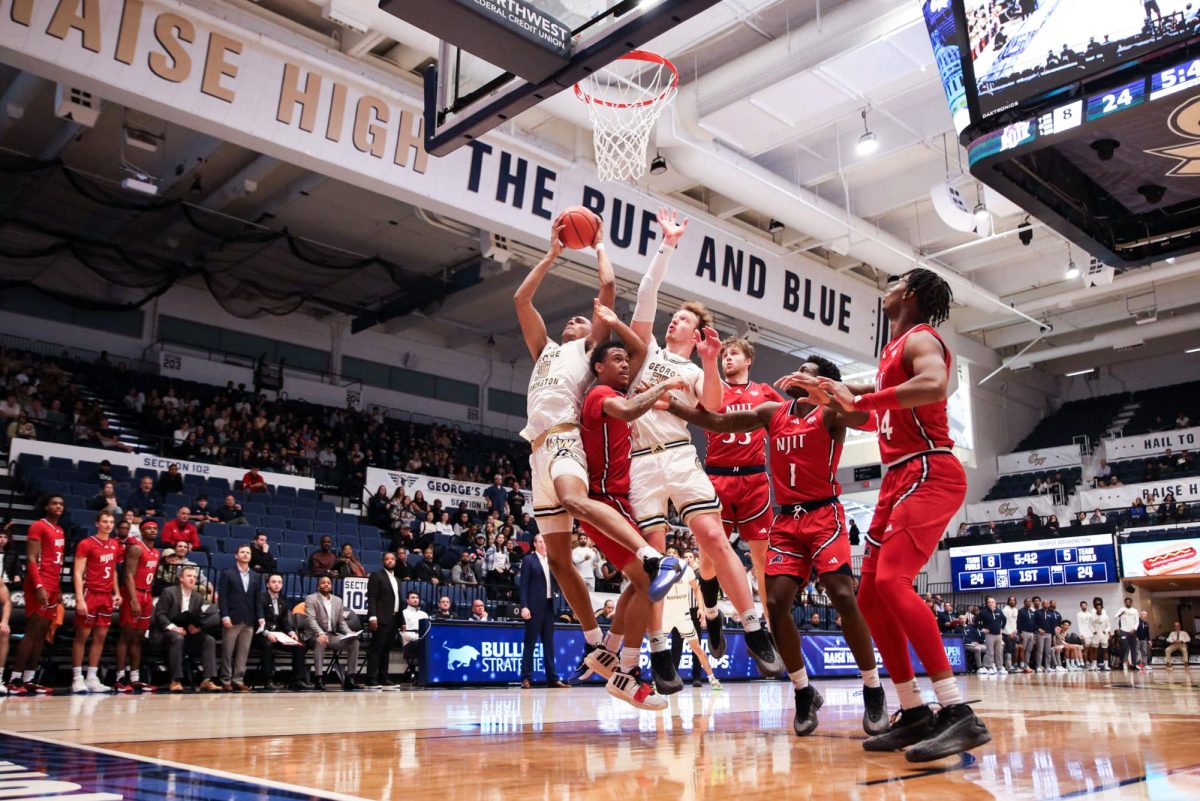Director of Athletics Patrick Nero expressed support last week for changes to student-athlete financial aid, saying the measure would help reduce the expense of living in the District.
At an NCAA Division I Board of Directors meeting Oct. 27, the board enacted the new policy, which allows student-athletes to receive up to $2,000 more institutional financial aid a year.
“For GW, it’s something we’re supportive of because, as most kids who go to school here understand, when you’re in a metropolitan market, it’s just more expensive to live,” Nero said.
The Atlantic 10 Council of Presidents and Directors of Athletics followed the NCAA’s direction Nov. 2, approving “a conference-wide policy to fund the total cost of attendance for men’s and women’s basketball grant-in aids,” adding that each institution can adopt similar measures for all of their intercollegiate athletics programs.
The decision is driven by a desire to remain strong in the face of ongoing conference realignment, the league said. The NCAA legislation allowed conferences to add the extra financial aid if they approved it as a league, and the Atlantic 10 was quick to adopt the measure.
“This is a really positive decision for the Atlantic 10 that will immediately impact our recruiting in the sports of Division I men’s and women’s basketball and reinforces the national commitment the A-10 has to basketball,” Atlantic 10 commissioner Bernadette V. McGlade said in a press release.
How the additional funding would specifically be doled out at GW has yet to be discussed, Executive Director for Athletics Communications Brian Sereno said, but it would likely come from the pre-existing pool of athletics aid. Sereno declined to comment on the exact amount of the existing financial aid pool.
Nero said despite the switch, he didn’t anticipate undue stress on current funds.
“You’re looking at maybe 25 student-athletes at $1,000 a semester, so we don’t anticipate it having a major impact,” Nero said. “It will fit within our current plan for scholarships, rather than needing extra dollars.”
The NCAA board also adopted changes to the duration of athletics scholarships. Institutions may currently only offer prospective student-athletes one-year, renewable scholarships, but under the new legislation, athletic departments could offer scholarships for multiple years. The NCAA rules and procedures surrounding revoking aid and appealing cut scholarships remain the same. Schools would be unable to cut aid based solely on athletic performance, but would still be able to revoke scholarships for non-performance reasons, including low grades, substance abuse, misconduct and other prohibited behavior.
Nero said the University has yet to discuss the multi-year scholarship option, adding that it would be “interesting” to see the direction that the proposal takes, but that the strain of agreeing to provide financial support for multiple years requires more discussion before implementation.
“It’s what they call permissive. We haven’t fully decided yet. We’re going to really talk a lot about it, because it’s a five-year commitment,” Nero said. “That can be difficult, to guarantee someone a scholarship for four or five years. So I think we’re going to talk a lot about it, we haven’t made up our mind yet.”






